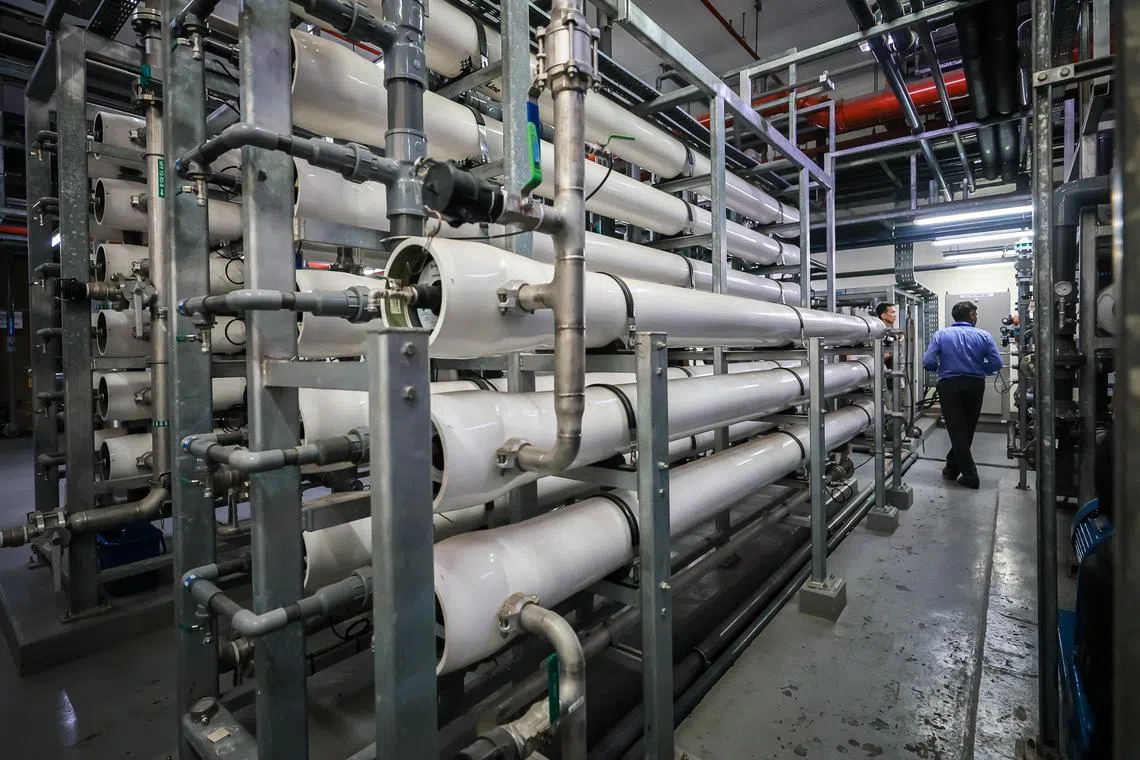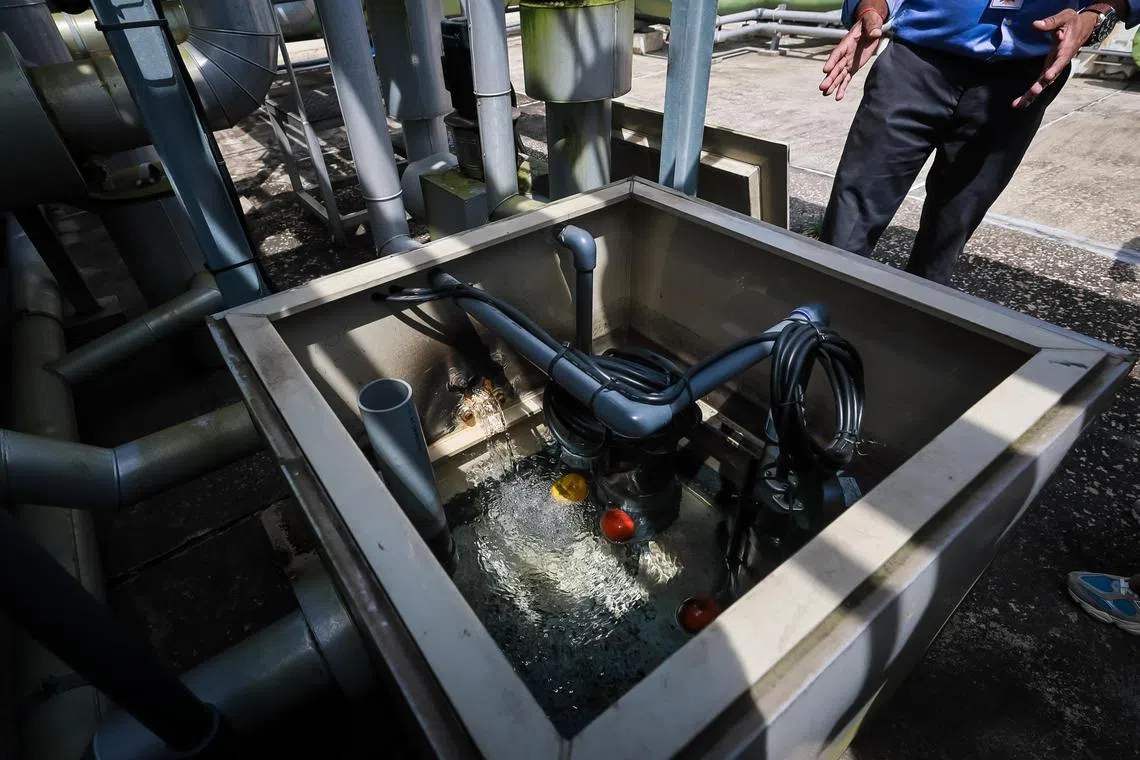Hoya Electronics recycles more than 75% of used water thanks to PUB’s Water Efficiency Fund
Sign up now: Get ST's newsletters delivered to your inbox

Reverse Osmosis (RO) Reject Recovery System in the Ultra Pure Water (UPW) plant at Hoya Electronics in Tampines.
ST PHOTO: GAVIN FOO
Follow topic:
SINGAPORE – Hoya Electronics Singapore has reached a 75 per cent water recycling rate in its production of advanced mask blanks, a particularly water-intensive process, with plans to increase this to 80 per cent.
Mask blanks are essential for manufacturing digital products like televisions and smartphones.
Hoya’s headquarters is in located in Tampines and the company has several facilities around the world in countries like Britain and Japan.
Thanks to national water agency PUB’s Water Efficiency Fund (WEF),
It now uses just 75,000 cubic m of water a year, as opposed to 190,000 cubic m before water recycling was implemented, cutting water costs by 75 per cent.
“Our company’s objective is to save water and save energy,” Mr Muthukumar Sethurajan, a staff engineer who spearheaded Hoya’s water recycling projects, told The Straits Times on Monday.
Hoya director Alex Liew said the recycling measures align with the company’s sustainability policy and that it is important for the business to build such sustainable initiatives.
As the non-domestic sector is projected to make up two-thirds of total water usage by 2065, there are strong calls for companies with water-intensive operations to implement programmes that minimise water wastage.
PUB hopes that the enhancements to WEF, which took effect on July 1, will encourage other companies to replicate Hoya’s success.
The funding cap for water-recycling initiatives was raised to $5 million per project from $1 million.
The Industrial Water Solutions Demonstration Fund, which covers the adoption of innovation and emerging technology beyond water recycling, was raised from $4 million to $5 million.
Grants for pilot studies were also increased, to $150,000, from $50,000 previously, with co-funding raised to 70 per cent from 50 per cent.
PUB hopes the funds make water-recycling projects more financially viable and attractive to companies.
Said PUB deputy director of water supply (network) Roland Chan: “When we give them that funding, it is a way to tilt the balance in favour of implementing the recycling project and making it more attractive.”
Beyond funding, PUB offers holistic support in other ways, said Mr Chan.
Its in-house engineers facilitate the end-to-end implementation of water recycling. This includes understanding the company’s water usage patterns, determining if they meet funding criteria, and analysing wastewater quality.
To date, Hoya has saved 25 million gallons through water-recycling systems at its facilities.
Hoya plans to invest in a new chemical water-recycling system to improve its recycling rate.

Hoya has saved 25 million gallons per day through water-recycling systems at its facilities.
ST PHOTO: GAVIN FOO
PUB’s Mr Chan acknowledges that recycling efforts can be challenging. He cited space as “one of the biggest challenges in the market”, especially for companies that have already set up their facilities.
He advised companies to incorporate sustainability when planning for new plants. “There is much more opportunity to incorporate (the water-recycling infrastructure) during the planning stage,” he said.
With already 375 WEF projects completed, Mr Chan is “more than optimistic” about the future of water-recycling in Singapore “because you can already see the effects”.
“I think companies are starting to realise that they can achieve profitability and sustainability hand in hand – they need not be mutually exclusive,” said Mr Chan, adding that these efforts will make their business model more resilient and attractive to investors.

